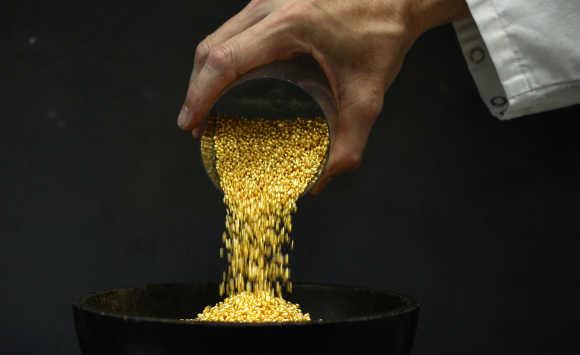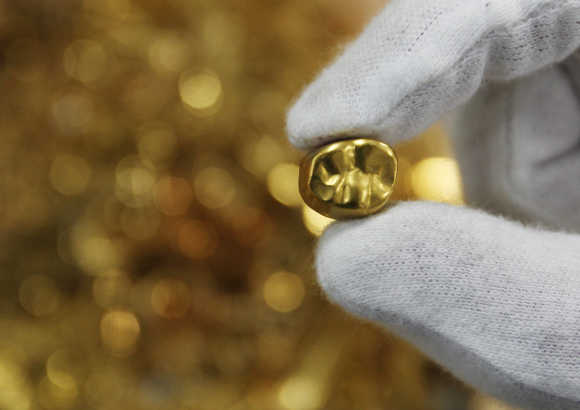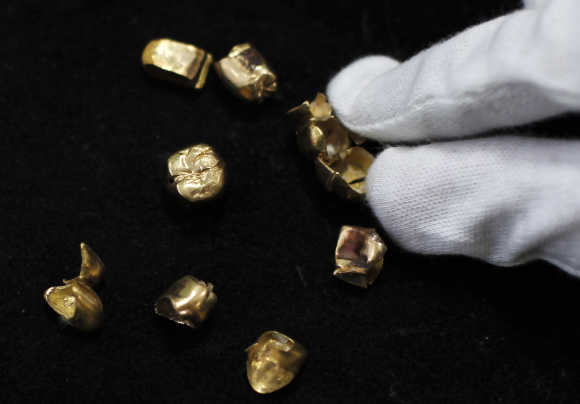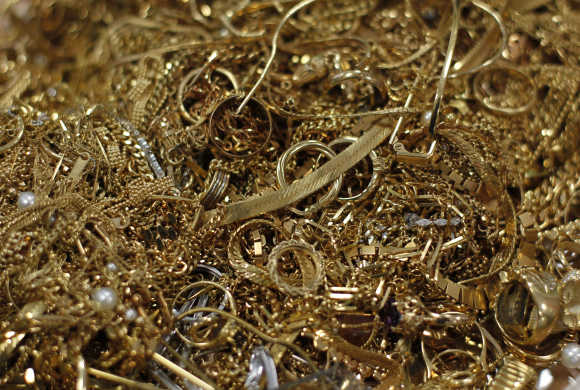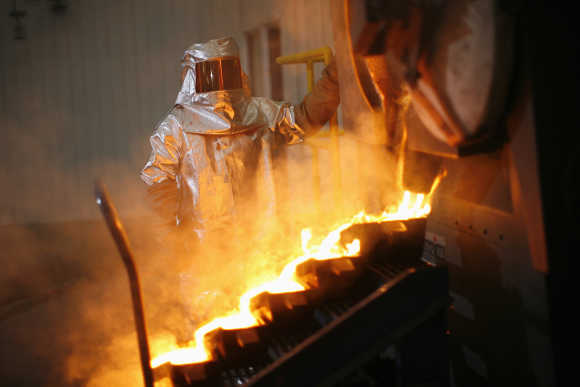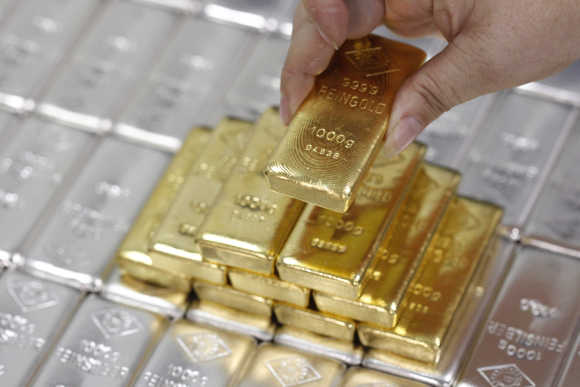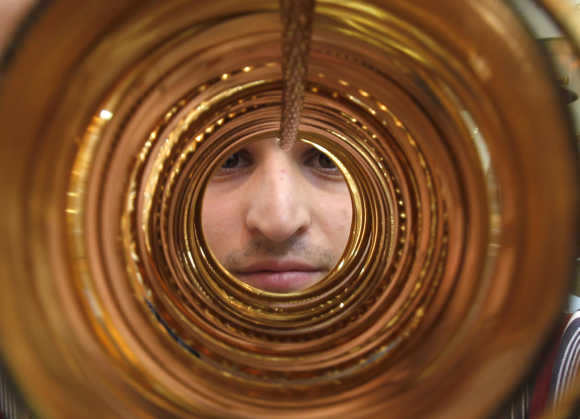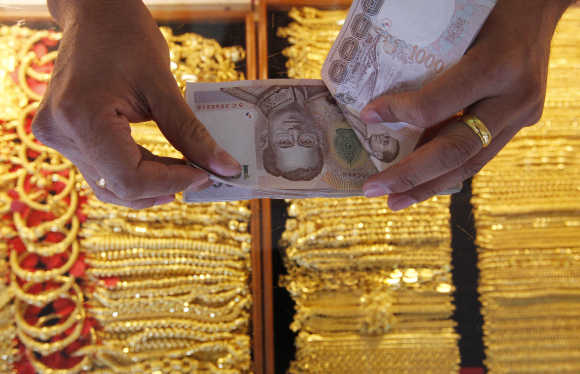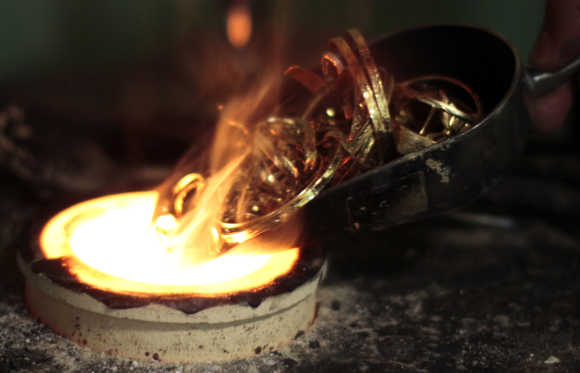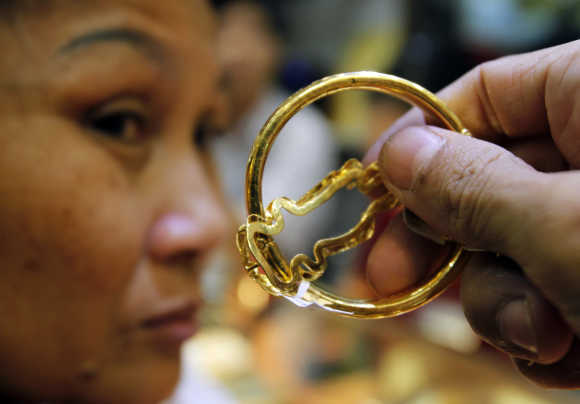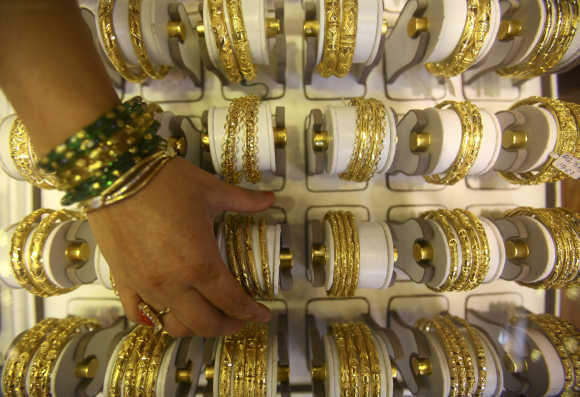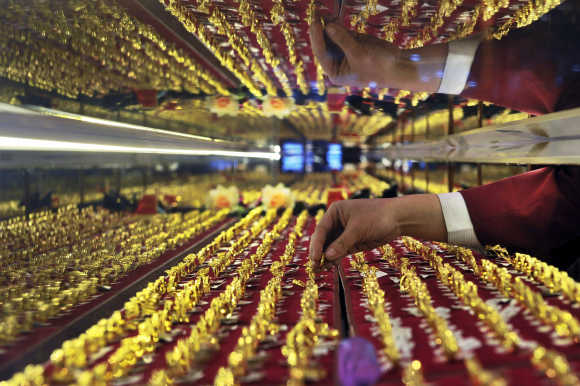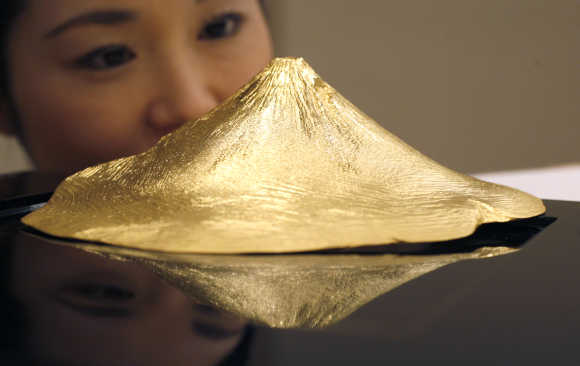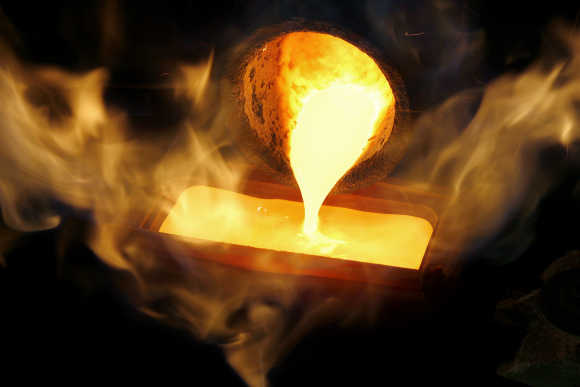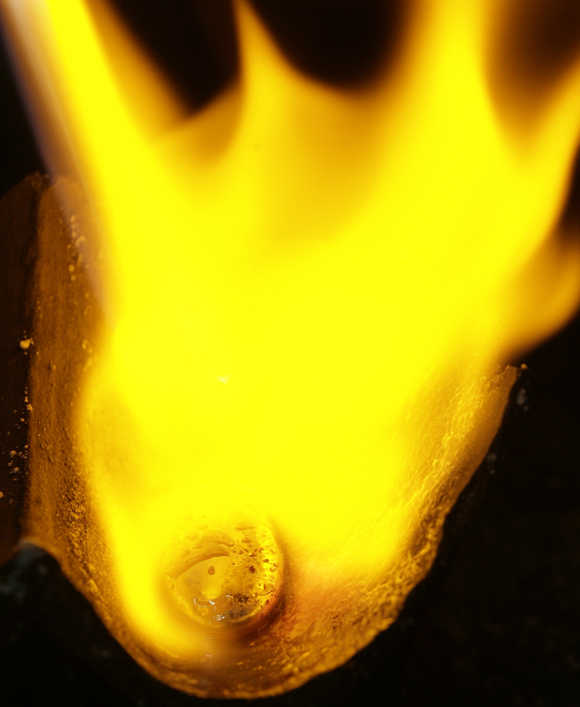 | « Back to article | Print this article |
Stunning images capture beauty of gold
Gold has been known and used by artisans since the Chalcolithic. Gold artifacts in the Balkans appear from the 4th millennium BC, such as those found in the Varna Necropolis, Bulgaria.
Gold artifacts such as the golden hats and the Nebra disk appeared in Central Europe from the 2nd millennium BC Bronze Age.
Let's take a look at the beauty of gold through the help of some amazing images.
Click NEXT to see more...
Stunning images capture beauty of gold
Egyptian hieroglyphs from as early as 2600 BC describe gold, which king Tushratta of the Mitanni claimed was "more plentiful than dirt" in Egypt.
Egypt and especially Nubia had the resources to make them major gold-producing areas for much of history.
Click NEXT to read more...
Stunning images capture beauty of gold
The earliest known map is known as the Turin Papyrus Map and shows the plan of a gold mine in Nubia together with indications of the local geology.
Click NEXT to read more...
Stunning images capture beauty of gold
Because of its historically high value, much of the gold mined throughout history is still in circulation in one form or another.
Click NEXT to read more...
Stunning images capture beauty of gold
Gold has been widely used throughout the world as a vehicle for monetary exchange, either by issuance and recognition of gold coins or other bare metal quantities, or through gold-convertible paper instruments by establishing gold standards in which the total value of issued money is represented in a store of gold reserves.
Click NEXT to read more...
Stunning images capture beauty of gold
However, production has not grown in relation to the world's economies. Today, gold mining output is declining.
With the sharp growth of economies in the 20th century, and increasing foreign exchange, the world's gold reserves and their trading market have become a small fraction of all markets and fixed exchange rates of currencies to gold were no longer sustained.
Click NEXT to read more...
Stunning images capture beauty of gold
At the beginning of World War I the warring nations moved to a fractional gold standard, inflating their currencies to finance the war effort.
After World War II gold was replaced by a system of convertible currency following the Bretton Woods system.
Click NEXT to read more...
Stunning images capture beauty of gold
Gold standards and the direct convertibility of currencies to gold have been abandoned by world governments, being replaced by fiat currency in their stead.
Switzerland was the last country to tie its currency to gold.
Click NEXT to read more...
Stunning images capture beauty of gold
Many holders of gold store it in form of bullion coins or bars as a hedge against inflation or other economic disruptions.
Click NEXT to read more...
Stunning images capture beauty of gold
Of all the precious metals, gold is the most popular as an investment. Investors generally buy gold as a hedge or harbor against economic, political. or social fiat currency crises (including investment market declines, burgeoning national debt, currency failure, inflation, war and social unrest).
Click NEXT to read more...
Stunning images capture beauty of gold
The gold market is subject to speculation as are other markets, especially through the use of futures contracts and derivatives.
Click NEXT to read more...
Stunning images capture beauty of gold
The history of the gold standard, the role of gold reserves in central banking, gold's low correlation with other commodity prices, and its pricing in relation to fiat currencies during the late-2000s financial crisis, suggest that gold behaves more like a currency than a commodity.
Click NEXT to read more...
Stunning images capture beauty of gold
Gold has been used throughout history as money and has been a relative standard for currency equivalents specific to economic regions or countries, until recent times.
Click NEXT to read more...
Stunning images capture beauty of gold
Since 1919 the most common benchmark for the price of gold has been the London gold fixing, a twice-daily telephone meeting of representatives from five bullion-trading firms of the London bullion market.
Click NEXT to read more...
Stunning images capture beauty of gold
Furthermore, gold is traded continuously throughout the world based on the intra-day spot price, derived from over-the-counter gold-trading markets around the world.
Click NEXT to read more...
Stunning images capture beauty of gold
Today, like most commodities, the price of gold is driven by supply and demand as well as speculation.
Click NEXT to read more...
Stunning images capture beauty of gold
However unlike most other commodities, saving and disposal plays a larger role in affecting its price than its consumption.
Click NEXT to read more...
Stunning images capture beauty of gold
Most of the gold ever mined still exists in accessible form, such as bullion and mass-produced jewellery, with little value over its fine weight - and is thus potentially able to come back onto the gold market for the right price.
Click NEXT to read more...
Stunning images capture beauty of gold
Given the huge quantity of gold stored above-ground compared to the annual production, the price of gold is mainly affected by changes in sentiment (demand), rather than changes in annual production (supply).
Click NEXT to read more...
Stunning images capture beauty of gold
According to the World Gold Council, annual mine production of gold over the last few years has been close to 2,500 tonnes.
Click NEXT to read more...
Stunning images capture beauty of gold
About 2,000 tonnes goes into jewellery or industrial/dental production, and around 500 tonnes goes to retail investors and exchange traded gold funds.
Click NEXT to read more...
Stunning images capture beauty of gold
Central banks and the International Monetary Fund play an important role in the gold price.
Click NEXT to read more...
Stunning images capture beauty of gold
At the end of 2004 central banks and official organisations held 19 per cent of all above-ground gold as official gold reserves.
Click NEXT to read...
Stunning images capture beauty of gold
Although central banks do not generally announce gold purchases in advance, some, such as Russia, have expressed interest in growing their gold reserves.
Click NEXT to read more...
Stunning images capture beauty of gold
It is generally accepted that interest rates are closely related to the price of gold. As interest rates rise the general tendency is for the gold price, which earns no interest, to fall, and as rates dip, for gold price to rise.
Click NEXT to read more...
Stunning images capture beauty of gold
As a result, gold price can be closely correlated to central banks via the monetary policy decisions made by them related to interest rates.
For example if market signals indicate the possibility of prolonged inflation, central banks may decide to enact policies such as a hike in interest rates that could affect the price of gold in order to quell the inflation.
Click NEXT to read more...
Stunning images capture beauty of gold
An opposite reaction to this general principle can be seen after the European Central bank raised its interest rate on April 7, 2011, for the first time since 2008.
The price of gold responded with a muted response and then drove higher to hit new highs one day later.
Click NEXT to read more...
Stunning images capture beauty of gold
A similar situation happened in India: In August 2011 when the interest rate were at their highest in two years, the gold prices peaked as well.
Click NEXT to read more...
Stunning images capture beauty of gold
Jewellery consistently accounts for over two-thirds of annual gold demand. India is the largest consumer in volume terms.
Click NEXT to read more...
Stunning images capture beauty of gold
The most traditional way of investing in gold is by buying bullion gold bars. In some countries, like Canada, Argentina, Austria, Liechtenstein and Switzerland, these can easily be bought or sold at the major banks.
